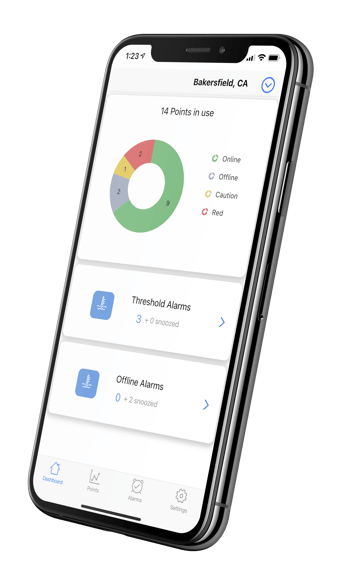
Identifying Open Door Threats in the OR to Reduce Surgical Site Infections
Operating rooms may be among the most tightly regulated environments in healthcare facilities, Sonicy helps ensure they're safe and monitored correctly.
Sonicu offers a comprehensive suite of monitoring solutions
that help organizations safeguard assets, automate compliance and reduce manual processes.
From protecting vaccines and research materials to safeguarding food service and facility operations, Sonicu’s monitoring applications cover temperature, humidity, pressure, and more. Whether you’re in healthcare, life sciences, food safety, or other industries, Sonicu provides visibility, compliance, and peace of mind across all your critical applications.
Designed with safety, efficiency and compliance always top of mind, we’ve evolved over a decade with continuous improvements from customer feedback. Serving the healthcare, research and food service industries.
Whether you're solving basic temperature monitoring needs or managing complex, multi-environment compliance, Sonicu’s full line of meters, sensors, and hubs has you covered.
Sonicu offers a comprehensive suite of monitoring solutions
that help organizations safeguard assets, automate compliance and reduce manual processes.

Understanding Heat Stress and OSHA Regulations: How to Protect Your Employees and Ensure Compliance

New OSHA regulations aim to curb workplace injuries resulting from dangerously hot indoor working conditions.
Heat-related illnesses are a threat in both indoor and outdoor settings, and the Occupational Safety and Health Administration (OSHA) has been working on federal standards that will address the root cause of these dangers.
Though their progress is methodical, they have published an Advanced Notice of Proposed Rulemaking (ANPRM).
The agency has also launched a National Emphasis Program, conducted hundreds of heat-related inspections, and created Heat.gov.
Beginning with the National Emphasis Program, this is a program of outreach, inspection, and enforcement aimed at addressing indoor and outdoor heat-related hazards. This program targets over 70 industries, including but not limited to the following sectors:
The program implements and describes policies and procedures that protect employees from heat-related hazards, injuries, and illness.
This program expands on OSHA’s current work and is intended to encourage early interventions by employers. The first step towards employers adopting these policies is the correct training and receipt of proper information and resources.
A valuable resource for employers to use is Heat.gov.
This federal website was created to dispense heat and health-related information and become a web portal for the National Integrated Heat Health Information System.
This system was intended to provide real-time data and response sources for the public, as well as local officials. While it was a collaboration between a number of federal agencies, some of the biggest players include:
The website includes heat forecasts from various federal agencies, guides to plan and prepare for high temperatures, and opportunities to support communities and public health programs at high risk for heat exposure.
This website is the Biden Administration’s latest effort to address extreme heat and other impacts from the climate change situation.
Using funding from the Bipartisan Infrastructure Law, crucial investments in programs that build resilient infrastructure that help communities withstand extreme weather conditions such as wildfires, drought, heat, and other heat-related hazards.
The current Administration has also made record investments to help families with their household energy costs through other pieces of legislation, recently with the passing of the Inflation Reduction Act.
In addition to inflation, climate change, and reducing energy costs are priorities of both the American people and the Biden Administration. July 2021 was the hottest month ever recorded on Earth, and summers are only getting hotter and deadlier.

Extreme heat is a global threat.
Human-caused climate change is an issue that’s getting even worse as the annual average temperature of the United States is projected to rise by 5-8.7℉ by the end of this century.
Heat-related illnesses and death are preventable with adequate education, planning, and monitoring.
Few health systems have action plans for heat exposure integrated into their real-time clinical health decision-making for patients.
As heatwaves become more frequent, intense, and last longer, there is a crucial need for increased health system preparedness to meet the growing load of heat-related illness.
Tools such as Heat.gov provide health systems easy access to information needed to improve patient and community health outcomes while simultaneously reducing system-wide impacts and efficiency of federal health agencies (1).
The first step in combating heat-related illnesses is proper education, both from job training and individual research.
Let's start with the definition of heat-related illnesses.

The four most common heat illnesses include heat rash, heat cramps, heat exhaustion, and heat stroke. These maladies can range in severity from irritating to life-threatening.
Heat rash is a skin irritation from prolonged heat exposure to the skin that results in redness and large rashes in extreme cases.
Heat cramps are painful muscle spasms that result from overheating and dehydration.
Heat exhaustion also results from dehydration and prolonged exposure that causes heavy sweating, a fast and weak pulse, rapid breathing, and even body weakness.
The most life-threatening of these illnesses occurs when the body temperature rises above 104℉ within a short span of time.
Symptoms of a heat stroke include confusion, seizures, and even loss of consciousness. If untreated, heat stroke can lead to organ failure, a coma, and even death.
A crucial part of this education is knowing the factors, both physical and even genetic, that increase the risk of contracting heat illness.
According to the Cleveland Clinic, additional factors that increase your risk of getting a heat illness include:
Ways to combat these factors are not only being aware of them, but taking proper individual precautions when exposed to heat to combat significant effects.
Standard precautions align with OSHA’s message of “Water.Rest.Shade.”
Employers are encouraged to ensure workers drink water every 15 minutes, take frequent breaks in the shade to cool down, train workers on the hazards of heat exposure, have an emergency plan ready to respond when there are signs of heat-related hazards, and allow workers to build a tolerance for working in the heat.
All of these precautions are essential to ensuring the safety of all individuals and combating heat-related illnesses. Employers and individuals can utilize free federal resources such as Heat.gov to learn more about these precautions and receive additional training and assistance.
Employers can also leverage technologies like Sonicu’s remote wireless heat stress temperature monitoring solution. Trusted in many manufacturing and logistics facilities, the Sonicu system is affordable, intuitive, and easy to deploy in just minutes.
While it can’t prevent high heat, cool your facility or prevent a surprise OSHA inspection, it can perform an important role in keeping managers and even employees aware of rising heat threats and demonstrate to inspectors that facility leadership is taking a proactive approach to managing heat stress threats.
Subscribe to our newsletter for expert insights, product updates, and strategies to keep your operations running smoothly.

